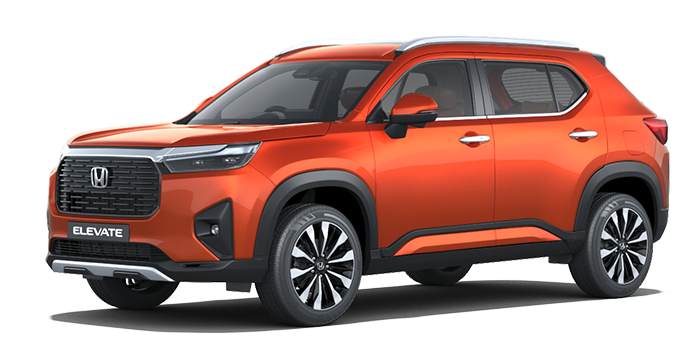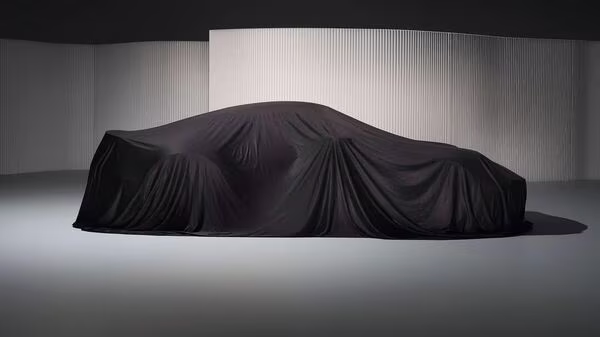Honda Cars India is set to electrify its lineup with the launch of its first all-electric vehicle (EV) between April 2026 and March 2027, as confirmed by Kunal Behl, Vice President of Sales and Marketing, Honda Cars India. This announcement marks a pivotal shift for the Japanese automaker, which has so far focused on strong hybrid models like the City e:HEV and Elevate e:HEV in India while steering clear of pure EVs. As competitors like Hyundai, Tata, Mahindra, Maruti Suzuki, and Toyota accelerate their electric offerings, Honda’s entry into India’s booming EV market signals a strategic pivot to capture a slice of the rapidly growing segment projected to reach 30% penetration by 2030. But what can we expect from Honda’s debut EV, and will it arrive in time to challenge the market leaders?
Honda’s EV Delay: Why the Wait?
India’s EV market is heating up, with retail EV sales crossing 1.8 million units in FY2025, driven by two-wheelers (58%) and passenger vehicles (30%). Mainstream players like Tata (Nexon EV, Punch EV), Mahindra (XUV400), and Hyundai (Ioniq 5, Kona Electric) have established strong footholds, while Maruti Suzuki’s e-Vitara and Toyota’s Urban Cruiser Electric are slated to debut within the next 3-5 months, potentially by January 2026. Yet, Honda has remained conspicuously absent from the pure EV race, prioritizing its hybrid portfolio, which blends fuel efficiency with electric assistance for urban buyers.
Kunal Behl, speaking at an industry event in September 2025, explained Honda’s cautious approach: “We’ve been refining our electrification strategy to align with India’s unique market needs—affordability, infrastructure, and range. Our first EV, launching in FY2027, will leverage Honda’s global expertise to deliver a compelling package.” This delay stems from multiple factors:
- Focus on Hybrids: Honda’s strong hybrids, like the City e:HEV (priced at ₹20.5 lakh), have been well-received, offering 26.1 km/l fuel efficiency and serving as a bridge to full electrification. The company prioritized this over rushing an EV into a nascent market.
- Infrastructure Concerns: India’s charging network, while expanding (targeting 100,000 stations by 2025 under FAME-III), remains urban-centric, limiting EV adoption in Tier-2/3 cities where Honda has a strong presence.
- Global Strategy Alignment: Honda’s global EV push, including models like the e:Ny1 and Ye Series, has focused on markets like Europe, China, and North America, where EV adoption is higher. India’s price-sensitive market required a tailored approach.
What to Expect from Honda’s First Indian EV
While Behl remained tight-lipped on specifics, industry insights and Honda’s global EV portfolio offer clues about what the first electric model might bring to India:
- Likely Model: The most probable candidate is a compact electric SUV based on Honda’s e:N Architecture F, used in models like the e:Ny1 (sold in Europe as the HR-V Electric). This platform supports front-wheel-drive layouts, 68.8kWh batteries, and ranges up to 412km (WLTP). A sub-4-meter version, tailored for India’s tax benefits (5% GST vs. 12% for longer vehicles), could compete directly with the Tata Punch EV and Maruti e-Vitara.
- Specifications: Expect a 150-200hp electric motor, a 50-60kWh battery (300-400km real-world range), and DC fast-charging at 80-100kW (10-80% in 30-40 minutes). Features may include a 10.2-inch touchscreen with Honda Connect, Level-2 ADAS (adaptive cruise, lane keep assist), and a panoramic sunroof.
- Pricing: To be competitive, Honda’s EV must start at ₹15-20 lakh ex-showroom, leveraging FAME-III subsidies (up to ₹10,000/kWh) and 80-90% localization at its Rajasthan plant. This would pit it against the Tata Curvv EV (₹17.5 lakh) and Hyundai Creta EV (expected ₹20 lakh).
- Design: Drawing from the e:Ny1 and Ye Series, expect a sleek, urban-focused design with Honda’s signature minimalist grille, slim LED headlights, and a tech-heavy cabin. A rugged aesthetic could appeal to India’s SUV-loving audience.
Honda’s partnership with Mitsubishi Corporation to explore battery-swapping tech and its global deal with LG Energy for 70GWh battery supply by 2030 suggest a focus on cost efficiency. Local assembly and battery sourcing (potentially from Tata AutoComp-Gotion) could keep prices in check.Competitive Landscape: A Crowded ArenaHonda’s FY2027 launch places it behind early movers but aligns with a maturing market. By 2026, India’s EV segment will be fiercely competitive:
- Tata Motors: Dominates with a 40% share, offering the Nexon EV (₹14.5-19.5 lakh, 465km range) and Punch EV (₹10-15 lakh, 400km). Tata’s 1,500 charging points and low running costs set a high bar.
- Mahindra & Mahindra: The XUV400 (₹15.5-18 lakh, 456km) and upcoming BE 6e (expected ₹20 lakh) target premium buyers with bold designs and 500km+ ranges.
- Hyundai: The Creta EV (launching Q1 2026, ₹20-25 lakh) and Ioniq 5 (₹46 lakh) cater to urban elites, with 400-500km ranges and fast-charging.
- Maruti Suzuki & Toyota: The e-Vitara and Urban Cruiser Electric, launching by January 2026, will offer 400-550km ranges at ₹15-25 lakh, backed by Maruti’s 3,000+ service network.
- Others: Renault’s Kiger EV (Q4 2026, ₹15 lakh) and MG’s ZS EV (₹24 lakh) add pressure, while luxury players like BMW (iX3) target higher segments.
Honda’s challenge is to differentiate itself in this crowded field. Its hybrid expertise could translate into efficient powertrains, and its reputation for reliability (J.D. Power 2025 India Satisfaction Study ranks Honda high) may win trust. However, a late entry risks losing ground to Tata’s scale and Maruti’s affordability.
India’s EV Market: Why Honda’s Timing Matters
India’s EV push is accelerating, with policies like FAME-III (expected 2025, ₹10,000 crore budget) and state-level incentives driving adoption. Battery prices have dropped to $100/kWh, and 5G-enabled highways are easing range anxiety. By FY2027, EVs are projected to account for 15-20% of passenger vehicle sales, up from 8% in FY2025. Urban centers like Delhi, Bengaluru, and Mumbai—Honda’s strongholds—are leading demand, with 60% of EV sales concentrated there.
However, challenges persist: charging infrastructure outside metros remains patchy, and high upfront costs deter rural buyers. Honda’s success will hinge on pricing its EV competitively (sub-₹20 lakh) and leveraging its 149 dealerships for service support. Social media buzz on X reflects excitement for Honda’s EV but skepticism about delays, with posts urging faster rollouts to rival Maruti’s e-Vitara.
Can Honda Catch Up?
Honda’s global goal of 100% EV/FCV sales by 2040 and its $65 billion electrification budget give it the muscle to compete. The e:Ny1’s 4-star Euro NCAP rating and the Ye Series’ success in China (50,000 units sold in Q2 2025) show Honda can deliver safe, desirable EVs. For India, a localized compact SUV with a 300km+ range, ADAS, and Honda’s hallmark durability could resonate, especially if priced below ₹20 lakh.Yet, the FY2027 timeline puts Honda a year behind Maruti and Toyota, and two years behind Tata’s next-gen EVs. To gain ground, Honda must:
- Localize Aggressively: Use its Tapukara plant for 90% localization, slashing costs.
- Expand Charging: Partner with BPCL or Reliance for charging networks, as seen with Tata.
- Target Urban Youth: Market the EV’s tech (OTA updates, Honda Connect) to millennials.
Conclusion: A Promising but Late Entry
Honda’s first EV in India, set for FY2027, is a bold step into a market where electrification is no longer optional. While Kunal Behl’s confirmation signals intent, the delay until late 2026 or early 2027 risks ceding ground to Tata, Maruti, and Hyundai. A competitively priced, feature-rich compact electric SUV could leverage Honda’s brand equity to carve a niche, but only if it delivers on affordability and infrastructure support. As India’s roads turn electric, Honda’s debut will be a test of whether it can catch up—or lead—the green revolution.


